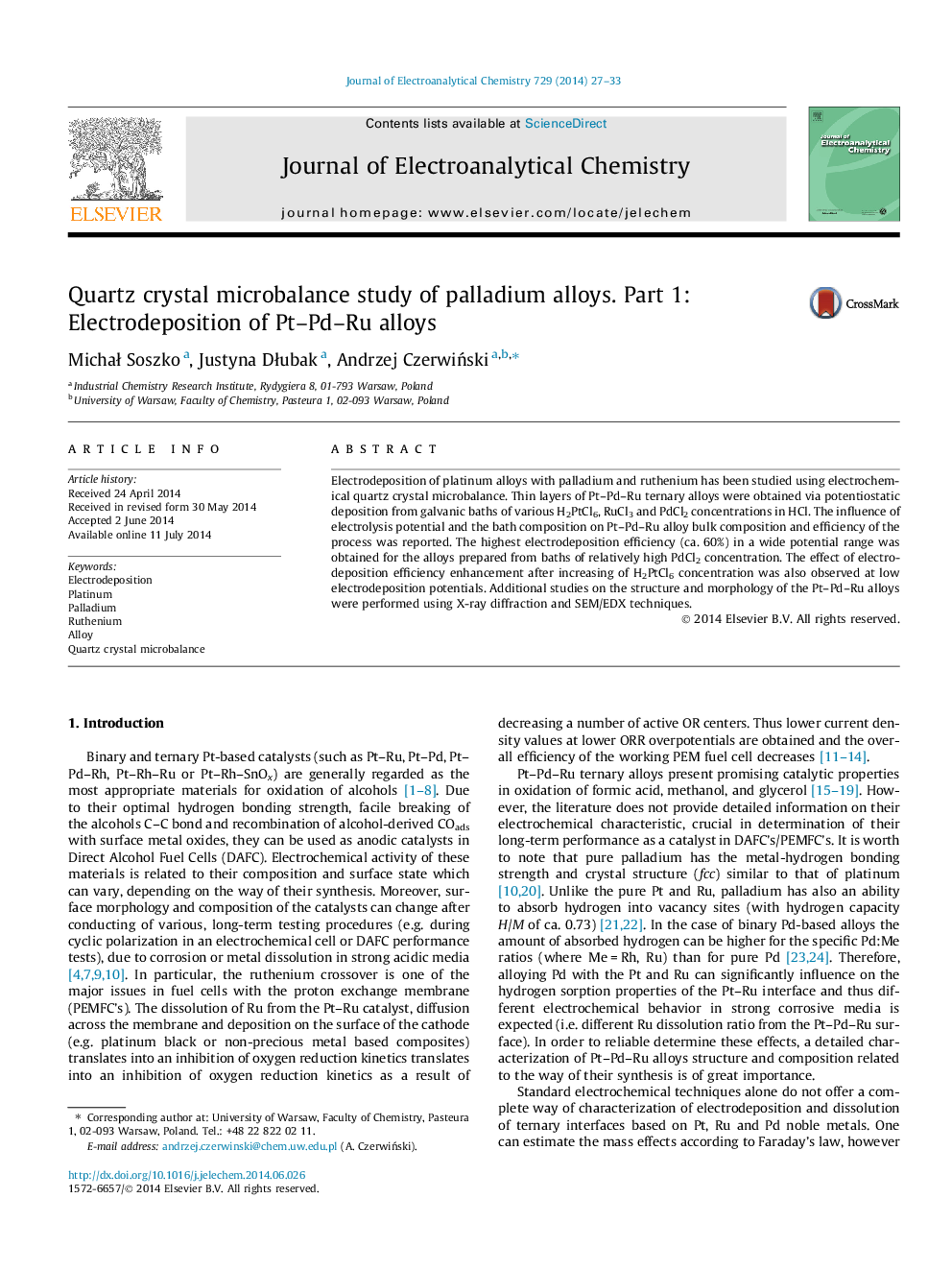| Article ID | Journal | Published Year | Pages | File Type |
|---|---|---|---|---|
| 218698 | Journal of Electroanalytical Chemistry | 2014 | 7 Pages |
•Pt–Pd–Ru alloys of wide bulk composition can be obtained from chloride solutions.•Pt–Pd–Ru bulk composition does not reflect the molar concentration of noble metal chlorides in the galvanic bath.•Pt–Pd–Ru electrodeposition efficiency is dependent on the PdCl2 concentration in the galvanic bath.•Homogeneity of the Pt–Pd–Ru alloys is dependent on the Ru bulk ratio.
Electrodeposition of platinum alloys with palladium and ruthenium has been studied using electrochemical quartz crystal microbalance. Thin layers of Pt–Pd–Ru ternary alloys were obtained via potentiostatic deposition from galvanic baths of various H2PtCl6, RuCl3 and PdCl2 concentrations in HCl. The influence of electrolysis potential and the bath composition on Pt–Pd–Ru alloy bulk composition and efficiency of the process was reported. The highest electrodeposition efficiency (ca. 60%) in a wide potential range was obtained for the alloys prepared from baths of relatively high PdCl2 concentration. The effect of electrodeposition efficiency enhancement after increasing of H2PtCl6 concentration was also observed at low electrodeposition potentials. Additional studies on the structure and morphology of the Pt–Pd–Ru alloys were performed using X-ray diffraction and SEM/EDX techniques.
